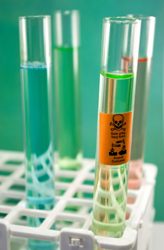Active materials for current measurement devices
Due to the deregulation of the electrical power market, the need for tighter and precise control is even higher. However, conventional devices for the measurement of electrical currents, built with almost the same technology of decades ago carry a significant risk of fire and explosion. The IELAS project partners, funded under the Fifth Framework Programme, worked on an alternative system that would be based on the propagation of elastic waves through dielectric media. The electrical current to be measured induces a magnetic field in the system's emitter which consists of a magnetostrictive material. Fifty or sixty Hertz electrical signals are converted into mechanical waves that are transmitted through a dielectric structure and ultimately reach the receiver. Piezoelectric materials in the latter convert the elastic waves back into electrical currents that are amplified and processed to produce an accurate reading of the original current's strength. Morgan Electro Ceramics, with extensive material and engineering expertise, assisted the IELAS project partners in tailoring piezoelectric materials towards the requirements of the sensor's receiver. A dramatic improvement in their physical, chemical and piezoelectric characteristics was achieved with the use of polycrystalline ceramics instead of natural piezoelectric crystals. The dense piezoelectric ceramics can be manufactured in almost any given shape or size, opening the way for more compact designs for the current sensor. Moreover, they are chemically inert and therefore immune to moisture and other atmospheric conditions. As active materials technologies mature, IELAS project partners' hope is to phase out conventional current sensors with significant savings in equipment weight and volume, but more importantly in manufacturing costs.







